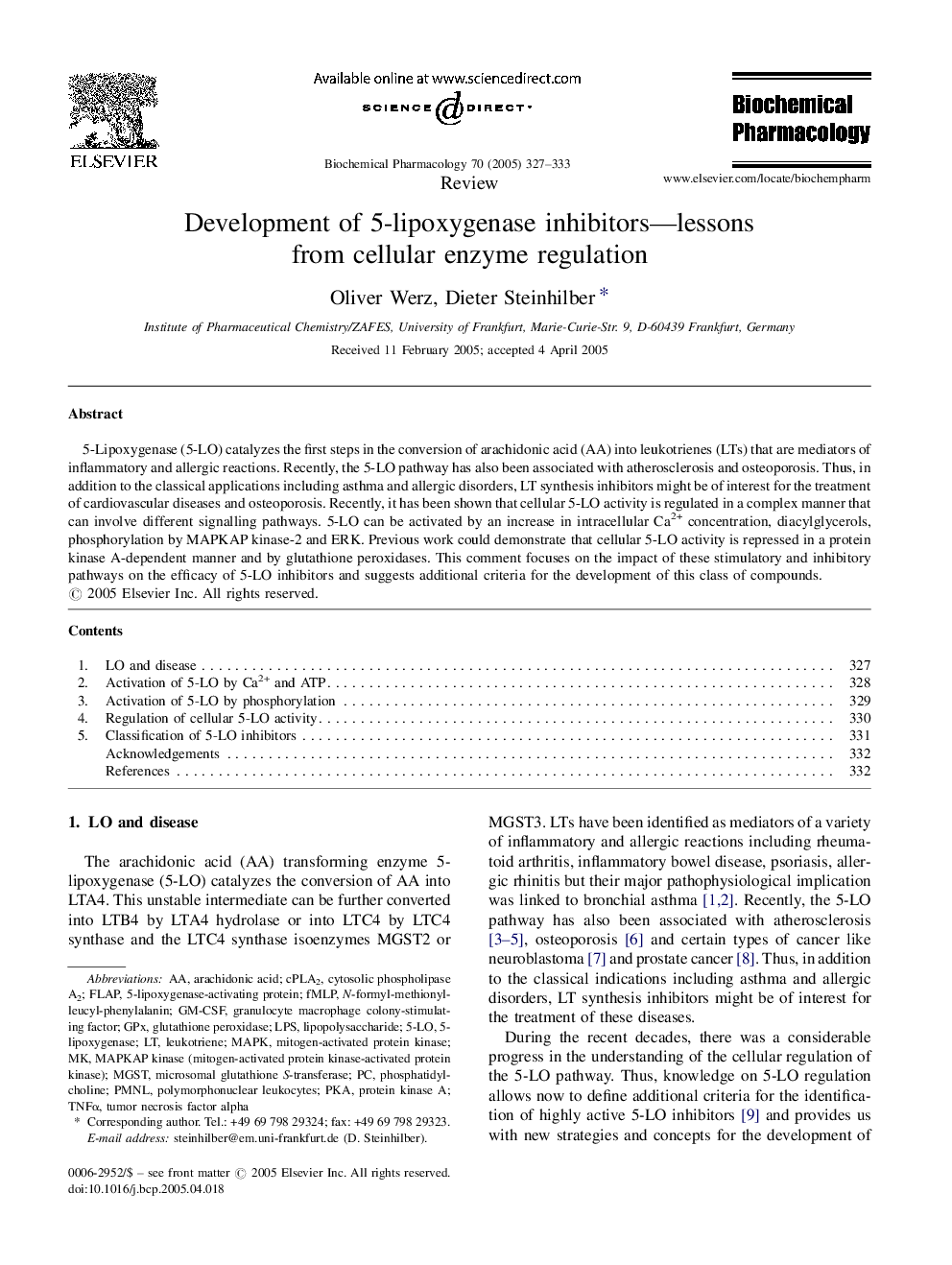| Article ID | Journal | Published Year | Pages | File Type |
|---|---|---|---|---|
| 9001585 | Biochemical Pharmacology | 2005 | 7 Pages |
Abstract
5-Lipoxygenase (5-LO) catalyzes the first steps in the conversion of arachidonic acid (AA) into leukotrienes (LTs) that are mediators of inflammatory and allergic reactions. Recently, the 5-LO pathway has also been associated with atherosclerosis and osteoporosis. Thus, in addition to the classical applications including asthma and allergic disorders, LT synthesis inhibitors might be of interest for the treatment of cardiovascular diseases and osteoporosis. Recently, it has been shown that cellular 5-LO activity is regulated in a complex manner that can involve different signalling pathways. 5-LO can be activated by an increase in intracellular Ca2+ concentration, diacylglycerols, phosphorylation by MAPKAP kinase-2 and ERK. Previous work could demonstrate that cellular 5-LO activity is repressed in a protein kinase A-dependent manner and by glutathione peroxidases. This comment focuses on the impact of these stimulatory and inhibitory pathways on the efficacy of 5-LO inhibitors and suggests additional criteria for the development of this class of compounds.
Keywords
TNFαLPSMicrosomal glutathione S-TransferasePMNLGPXMGSTpKa5-LOfMLPcPLA2GM-CSF5-LipoxygenaseMAPKArachidonic acidFlaptumor necrosis factor alphaphosphatidylcholinecytosolic phospholipase A2Leukotrienepolymorphonuclear leukocyteslipopolysaccharidegranulocyte macrophage colony-stimulating factor5-Lipoxygenase-activating proteinprotein kinase Amitogen-activated protein kinaseglutathione peroxidase
Related Topics
Health Sciences
Pharmacology, Toxicology and Pharmaceutical Science
Pharmacology
Authors
Oliver Werz, Dieter Steinhilber,
